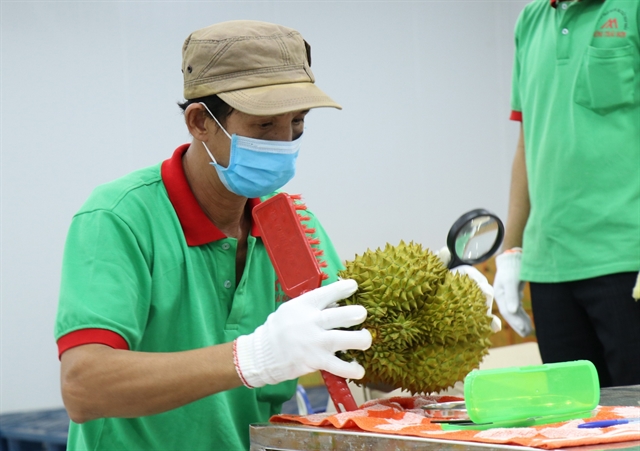 Economy
Economy


|
| Durians are examined before being loaded on trucks for exports to China. — VNA/VNS Photo Anh Dũng |
HÀ NỘI — Customs procedures for two containers of Vietnamese durians exported to China were completed on Monday morning at Hữu Nghị International Border Gate in the northern province of Lạng Sơn.
This is the first of the 100 tonnes of durians harvested from Krông Pắk in the Central Highlands Province of Đắk Lắk that are to be exported to China via an official channel, thanks to the phytosanitary protocols for Vietnamese fruits exported to China that have been signed between Việt Nam’s Ministry of Agriculture and Rural Development and China’s General Administration of Customs.
The official export of durian will help Vietnamese businesses gain access to this large market, and at the same time help businesses and farmers earn higher profits from this speciality fruit.
To achieve this milestone, durian growing areas and packing companies conducted serious preparations and underwent many stages of inspection by specialised agencies of the two countries to meet the requirements on the control of harmful organisms, food safety and hygiene, guaranteeing no residues of pesticides exceeding the permitted level, as well as strict compliance with packaging regulations and ensuring accurate traceability.
Đắk Lắk Province currently has more than 15,000 hectares of durian, making it the second largest area in the country after Tiền Giang Province in the Mekong Delta.
China’s customs have approved and granted codes for four packaging facilities and 23 durian planting areas in Đắk Lắk (accounting for 45 per cent of the total codes granted for Việt Nam), with a total area of about 1,500ha.
Đắk Lắk’s durian output in 2022 is estimated at 170,000 tonnes and could reach over 300,000 tonnes by 2025. — VNS




